
Ukiyo-e Prints浮世絵版画Port Townsend, Washington |
|
A CLICKABLE INDEX/GLOSSARY (Hopefully this will be an ever changing and growing list.)
Si thru Tengai |
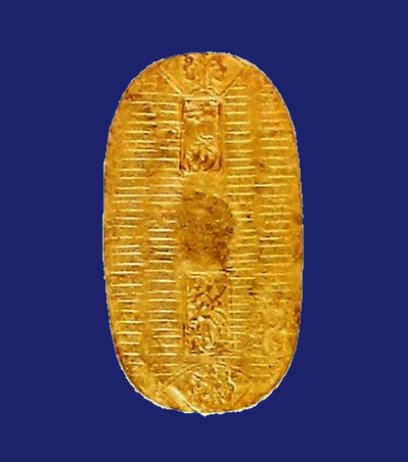
|
|
The gold koban coin on a blue ground is being used to mark additions made in June 2008. |
|
|
|
TERMS FOUND ON THIS PAGE:
Siddhartha, Sino-Japanese War, Soba noodles, Soku mie, Sosaku hanga, Martha Stewart, Sugi, Sugoroku, Suidobashi, Suidobashi, Suji-guma, Sung Dynasty, Suzume-bachi, Tachibana, Tachibina, Tai, Takagi Umanosuke, Takanoha, Takao, Takarabune, Takaramono, Takara zukushi, Take, Taki, Takuhon, A Tale of Two Cities, Tamagushi, Tamaya, Tan, Tanawa, Tanuki, Tatewaku, Tebori, Ten and Tengai
日清戦争, 蕎麦, 束見栄, 創作版画, 杉, 双六, 水道橋, 筋隈, 宋朝, 雀蜂, 太刀, 橘, 立雛, 鯛, 鷹の羽, 高尾, 宝船, 寳物, 寳づくし, 竹, 瀧, 拓版, 二都物語, 玉串, 玉屋, 丹, 手縄, 狸, 立涌, 手彫り, 点, 天蓋 and 天蓋
シッダールタ, にっしんせんそう, そば, そくみえ, etc. |
|
|
TERM/NAME |
KANJI/KANA |
DESCRIPTION/ DEFINITION/ CATEGORY Click on the light green numbers to go to linked pages. |
|
|
Siddhartha |
シッダールタ |
A 1922 novel by Hermann Hesse based on the life of the first historical Buddha. He is also referred to as Shakyamuni (釈迦 or しゃか). 1 |
|
|
Sino-Japanese War |
日清戦争 にっしんせんそう |
War between Japan and China 1894-5. 1 |
|
|
Soba noodles |
蕎麦 そば |
||
|
Soku mie |
束見栄
そくみえ
|
Those familiar with ballet know that in the first position the dancer stands with the feet touching at the heels. The same is true here. Soku means 'sheaf' and I would suppose that the position of the actor in some ways mimics our vision of that object. There are quite a few different types of poses - "...a nonrealistic, sculpturesque, dance-like pose taken by one of more actors at a climactic moment in a play to make a powerful impression."
Quote from: New Kabuki Encyclopedia: A Revised Adaptation of kabuki jiten, compiled by Samuel L. Leiter, 1997, pp. 403-5.
The image to the left above is a detail from a print by Kuniyasu where an actor is assuming the soku mie pose. The lower example is from a Toyokuni III vertical diptych. Click on the number 1 in the column to the right to see the full diptych.
|
|
|
Sosaku hanga |
創作版画 そうさくはんが |
Creative print: a 20th c. invention where the artists does the drawing, carves the blocks and prints all by himself. 1 |
|
|
Sugi |
杉
すぎ |
Cryptomeria motif: Dower notes that the "stately cryptomeria" was associated with numerous Shinto shrines from the earliest times. For that reason the wearing of this tree as a crest took on a religious significance. It also was considered an auspicious sign.
Source: The Elements of Japanese Design, by John W. Dower, pp. 54-5. 1 |
|
|
Sugoroku |
双六 すごろく |
A game played with dice on a large sheet of paper illustrated with a series of pictures. Like parcheesi a player moves according to the toss of the die. Traditionally it was played by children at New Year's. |
|
|
Suidobashi |
水道橋
すいどうばし |
An aqueduct bridge over the Kanda river/canal in the Ochanomizu district. Today it is only a traffic bridge. 1 |
|
|
Suji-guma |
筋隈
すじくま |
"Streaked" makeup: A special type of lined makeup meant to enhance actors performing in the aragoto or "rough stuff" style. It is meant to strengthen their masculine presence. Originated by Ichikawa Danjūrō (1689-1758) possibly influenced by earlier Chinese sources.
The detail to the left is from an 1894 print by Kunichika of Ichikawa Sadanji I as Umeōmaru. |
|
|
Sung dynasty |
宋朝 そうちょう |
Chinese dynasty noted for its cultural refinements 1
|
|
|
Suzume-bachi |
雀蜂
すずめばち |
Wasp or hornet 1
|
|
|
Tachibana |
橘
たちばな |
A citrus fruit motif perhaps the mandarin orange: "Reputedly brought to Japan from China in the 3rd century A.D., the mandarin orange was immediately admired for its glossy green leaves, fragrant blossoms, and beautiful, succulent fruit."
Quote from: The Elements of Japanese Design, by John W. Dower, pp. 62. |
|
|
Tachibina |
立雛
たちびな |
Standing dolls are usually made of paper. There is the taller male figure and the shorter female. He wears a short-sleeved kimono or kosode with hakama (袴 or はかま) 'pants' or formal divided skirt. She, a paper wrapped cylinder, also wears a kosode tied off with a paper obi. 1
|
|
|
Tai |
鯛
たい |
The king of fish. Served on New Year's holidays and on other special occasions. 1 |
|
|
Takagi Umanosuke |
|
Subject of a print by Kuniyoshi from the series "Sixty Odd Provinces of Japan - Dramatic Chapters" 1 |
|
|
Takanoha |
鷹の羽
たかのは |
Falcon feather motif: Considering the masculine nature of falconry and its appeal to the military class it is no surprise that this motif would be used as a family crest or mon. Merrily Baird in her Symbols of Japan: Thematic Motifs in Art and Design (p. 108) she notes that "...falcons and hawks became natural emblems of the Japanese warrior class due to their keen eyesight, their predatory nature, and their boldness."
In crest design feathers were understood to be substitutes for the full images of falcons. |
|
|
Takao |
高尾
たかお |
Tragic courtesan from the kabuki play "Date Kurabe Okuni Kabuki" or a similar play working with the same basic theme. Today it is only known as a minor subplot of a more important, but originally unrelated work. 1, 2, 3, 4, 5 |
|
|
Takarabune |
宝船
たからぶね |
Treasure ship which is said to sail into ports on New Year's carrying the Seven Propitious Gods and their jewels and other symbols of good luck.
The image to the left is a detail from a print by Toyokuni I and shows only two of the seven gods. |
|
|
Takaramono |
寳物 たからもの |
The "Myriad Treasures" often linked to the 7 Propitious Gods. 1 |
|
|
Takara zukushi |
寳づくし たからづくし |
Assorted lucky treasures |
|
|
Take |
竹
たけ |
The bamboo motif: The plant was imported into Japan from China and became a basic element in the gardens of the nobility. This association with the upper classes is not surprising considering its significance to the Chinese. In China there were only two - some say three - recognized arts. The greatest was calligraphy and the other was painting. Both were performed with basically the same materials. In painting the greatest form was the rendering of bamboo. Intrinsic to the plant were all kinds of positive traits: resilience in the face of adversity, i.e., wind or cold and suppleness or its ability to bend and adapt. There were judged to be among the most desirable qualities.
In Japan many warrior families adopted the bamboo in form or another as their family crest or mon. 1 |
|
|
Taki |
瀧
たき |
A waterfall. (Eikei, one of our correspondents and one of the great contributors to this site, notes that nowadays a simplified form of the kanji character is more commonly used although that is not how it appears on most ukiyo prints. The simpler form is 滝.)
To the left is a detail of a print of a waterfall by Hiroshige. 1 |
|
|
Takuhon |
拓版 たくはん
|
Roger Keyes gives an absolutely poetical description of this technique. "Jakuchū adapted an old printing technique recently revived in the Kyoto area called takuhon, or 'rubbing,' which reversed black and white. Jakuchū's black outline drawing is white. The white sky is black. The river is gray. The riverbank and landscape are dark gray near the water, shading to light. The effect is startling. Like a Zen koan, it stops thought. Creates wonder. Enchantment."
Keyes is referring to the long, scroll-like printing of "Aboard the Ship of Inspiration." I first saw a copy of this masterpiece on display in the Metropolitan Museum of Art. I was all alone at the time. No crowds. A Noguchi fountain nearby was doing its very Zen-like thing and like Keyes said: "...it stops thought."
Keyes also notes that this art work was not produced in the traditional way: "...the printer did not ink the blocks, but gradually built each print by tapping ink onto the paper..." through the use of a tanbo [たんぼ] or "...large ball of inked cotton fiber wrapped in cloth."
Source and quotes: Ehon: The Artist and the Book in Japan published by the New York Public Library and the University of Washington Press, 2006, p. 86.
See also our entry on ishizuri-e on our Hil thru I index/glossary page and also comments about this technique on one of our Gengyo pages. |
|
|
A Tale of Two Cities |
二都物語 |
Novel by Charles Dickens (チャールズ・ディッケンズ). 1 |
|
|
Tamagushi |
玉串 たまぐし |
"A branch of the sacred sakaki tree with zig-zag strips (shide) of paper or cloth, or lengths of tree fibers (yű) attached." They may be used as offerings or amulets and the tama element may have its origin in Nihonga which mentions a sakaki decorated with jewels. Strangely reminiscent of a Christmas tree. |
|
|
Tamaya |
玉屋 たまや |
A prominent brothel in the Yoshiwara 1 |
|
|
Tan |
丹
たん
|
An orange lead pigment which often shows oxidation. Personally I find this an extremely attractive element within Japanese prints. But that may be just my taste.
In the early 18th century "...artists began to apply a few colors to the print by use of a brush. This type of colored print was called a tan-e because of the red pigment (tan) that was used."
"Tan (yellowish red) is made of lead, saltpeter, and sulfur.... It is a pleasing color, but unfortunately, its tone is likely to change."
Quotes from: Japanese Print-Making: A Handbook of Traditional & Modern Techniques, by Toshi Yoshida & Rei Yuki, Charles E. Tuttle Company, 1966, pp. 20 and 54.
In a technical section on dyes at the end of Japanese Woodblock Prints: A Catalogue of the Mary A. Ainsworth Collection (p. 254) Robert Feller, Mary Curran and Catherine Bailie note that "Although inorganic pigments tend to be stable...some of these can also readily change in appearance.... Red lake and white lead can discolor owing to the chemical reaction of these pigments with sulfides in the atmosphere, causing them to darken owing to the formation of black lead sulfide." |
|
|
Tanawa |
手縄
たなわ |
The guide ropes held by the cormorant fisherman to control and retrieve his birds. See our entry on ukai.
The image to the left is a detail from a print by Eisen. We have added the yellow pointer for clarity. |
|
|
Tanuki |
狸
たぬき |
An animal with supernatural powers which are viewed as more humorous than threatening. Often portrayed with an exceedingly large scrotum. 1, 2 |
|
|
Tatewaku |
立涌
たてわく |
An ancient decorative motif made up of double wavy lines which repeat a pattern of narrowing and widening into a bulge before narrowing again. The bulges are often filled with other known motifs. Probably of Chinese origin. 1 |
|
|
Tebori |
手彫り
てぼり |
Hand-carved: The traditional Japanese use of needles to create a tattoo. Tebori can also refer to the carving of seals, jewelry or anything else for that matter. However, in the case of tattooing a distinction is made in that it refers to the technique used prior to the invention of the electric needle. Tebori is still being practiced.
The image to the left below is a doctored detail from an image by Yoshitoshi showing a tattoo being applied in the traditional manner. 1 |
|
|
Ten |
点
てん |
Dot pattern as used in clothing. |
|
|
Tengai |
天蓋
てんがい |
The woven sedge hat worn by mendicant monks of the Fuke group of the Rinzai sect. These monks were never to take this item off whenever they were outside the confines of their monastery or temple. Of course, in time others started wearing these hoods as a form of disguise. They came to serve new purposes for lovers' trysts, criminals and spies.
Tengai also translates as canopy or dome.
The image to the left shows a detail of a tengai being held by a secret lover in a print by Harunobu. |
|
|
Tengai |
天蓋
てんがい |
Canopy: One of the 8 Treasures of Buddhist symbology. Said to protect the faithful sickness and poverty. The other seven symbols are the conch shell, the Buddhist wheel, the sacred parasol, the lotus flower, the sacred vase, the urn and the bancho which is similar to the endless knot representing eternal life.
Note: The motifs decorating the bottom of the canopy do not consist of the other 7 treasures. Although these images were also considered auspicious there was a lot of mixing and matching going on over the centuries and I am not sufficiently versed to know when each grouping appeared and under what guise.
The detail to the left is from a print by Kuniyoshi. The green cartouche is part of the prints design. I have left it in the image because it overlaps the canopy itself.
For a discussion of the swastika symbol to to our Kutsuwa thru Mok index/glossary page and look at our entry on manji.
Also note that the kanji for the canopy and the sedge hat shown in the entry above it are exactly the same. Considering their separate but similar religious connections their use of the same character makes sense. |
|
|
A thru Ankō |
|
|
Aoi thru Bl |
Bo thru Da |
De thru Gen |
Ges thru Hic |
Hil thru Hor |
|
Hos thru I |
|
J thru Kakure-gasa |
|
Kakure-mino thru Ken'yakurei |
|
|
Kesa thru Kodansha |
|
|
Kōgai thru Kuruma |
Kutsuwa thru Mok
|
Mom thru N |
O thru Ri |
Ro thru Seigle |
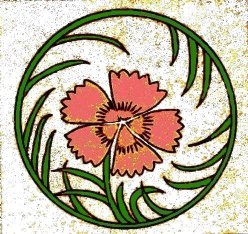 Sekichiku thru Sh |
Tengu thru Tsuzumi |
Yakusha thru Z |
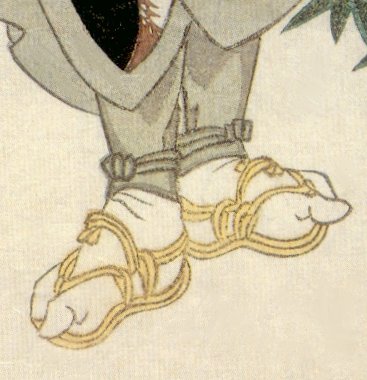
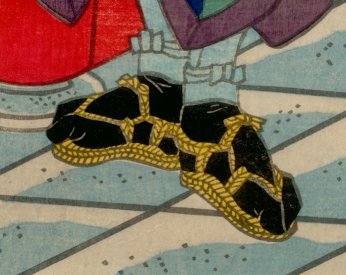
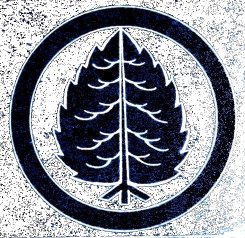
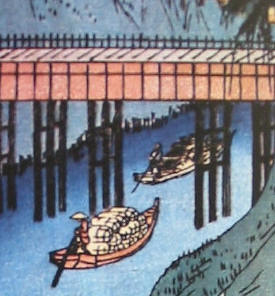
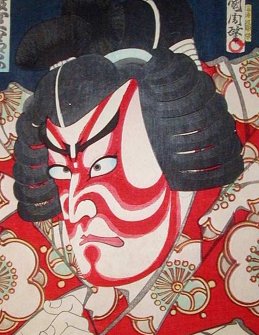
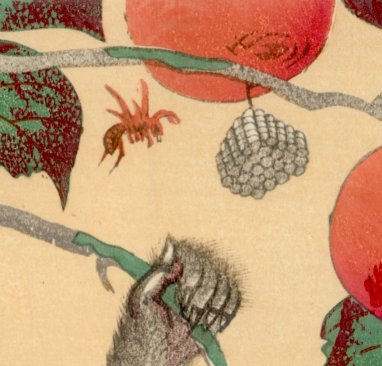
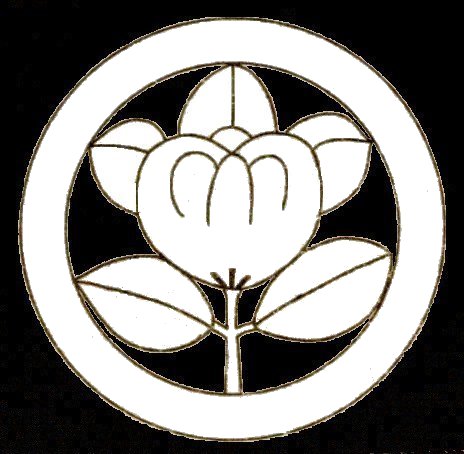
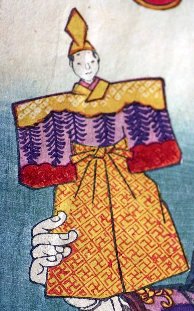
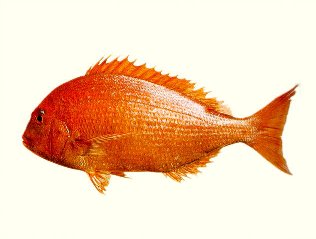
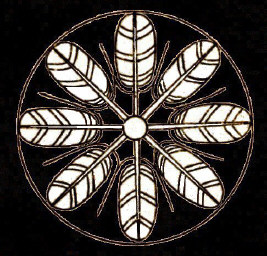
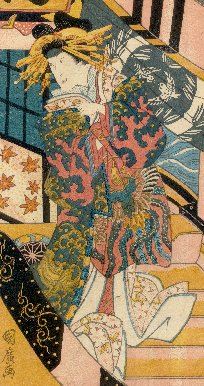
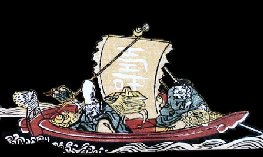
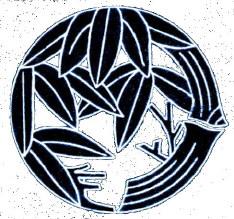
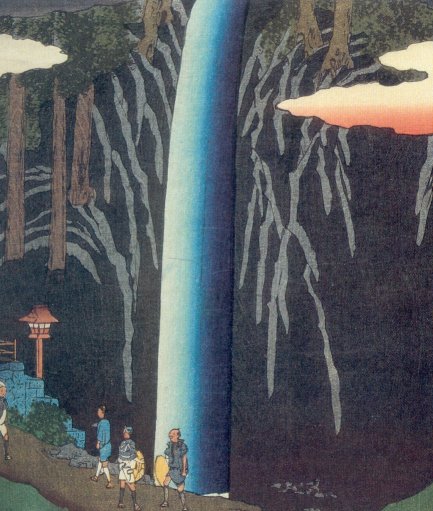
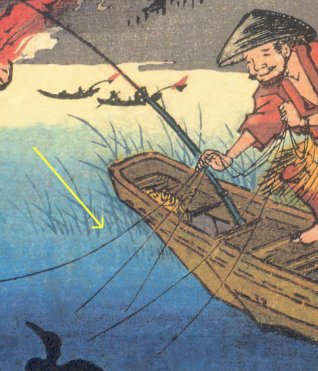
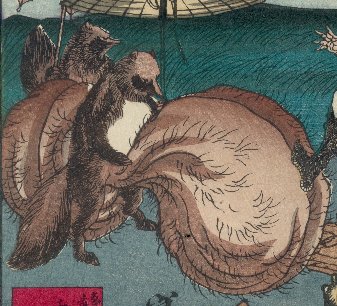
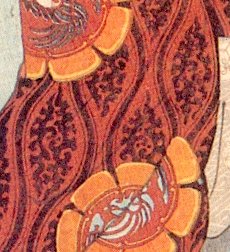
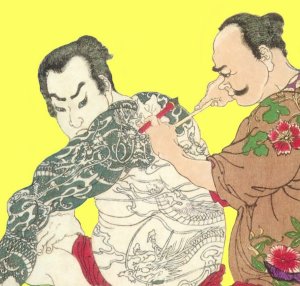
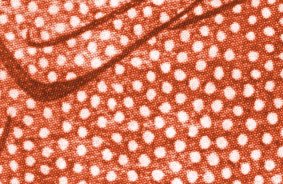
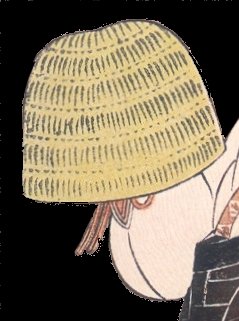
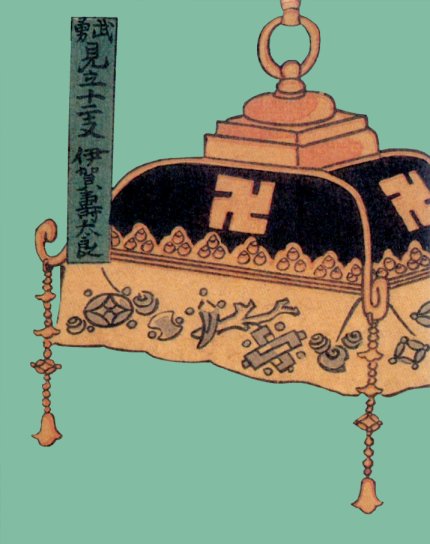
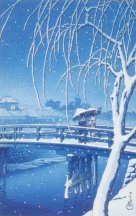
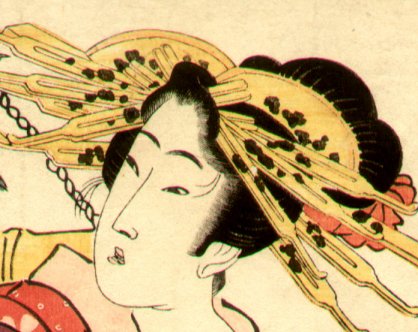


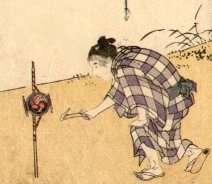
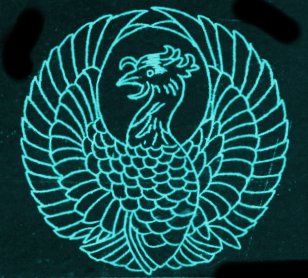
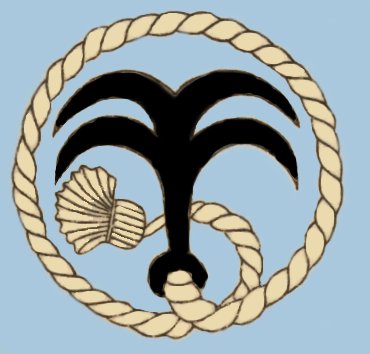
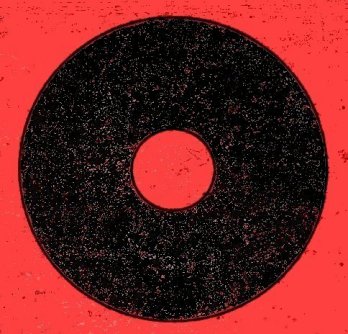
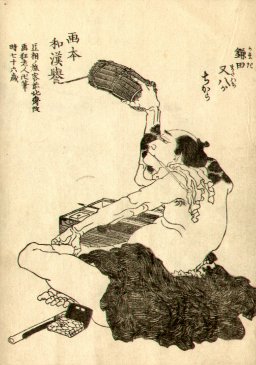
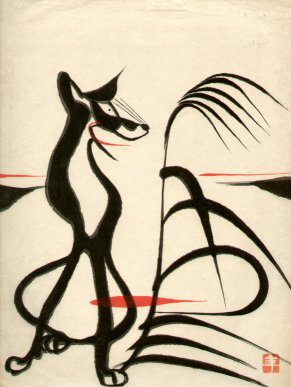
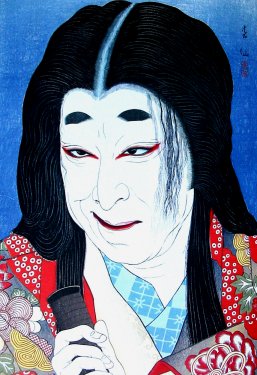
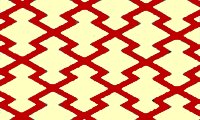
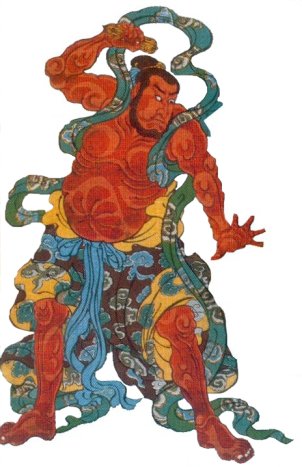
3.jpg)
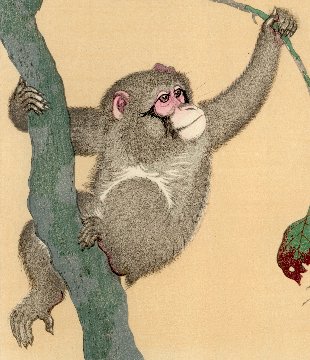
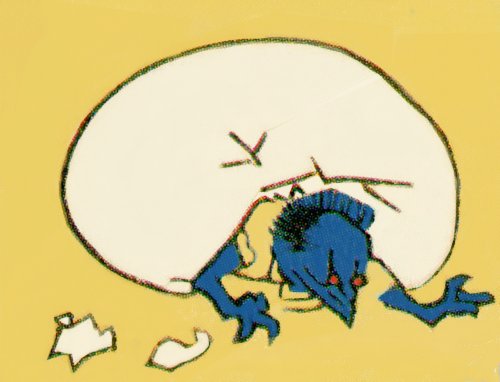
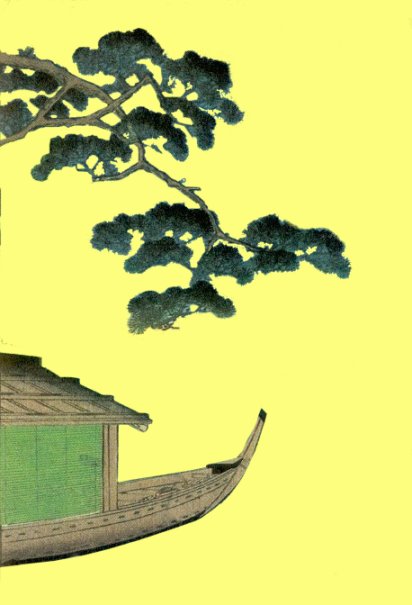
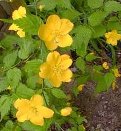
 HOME
HOME